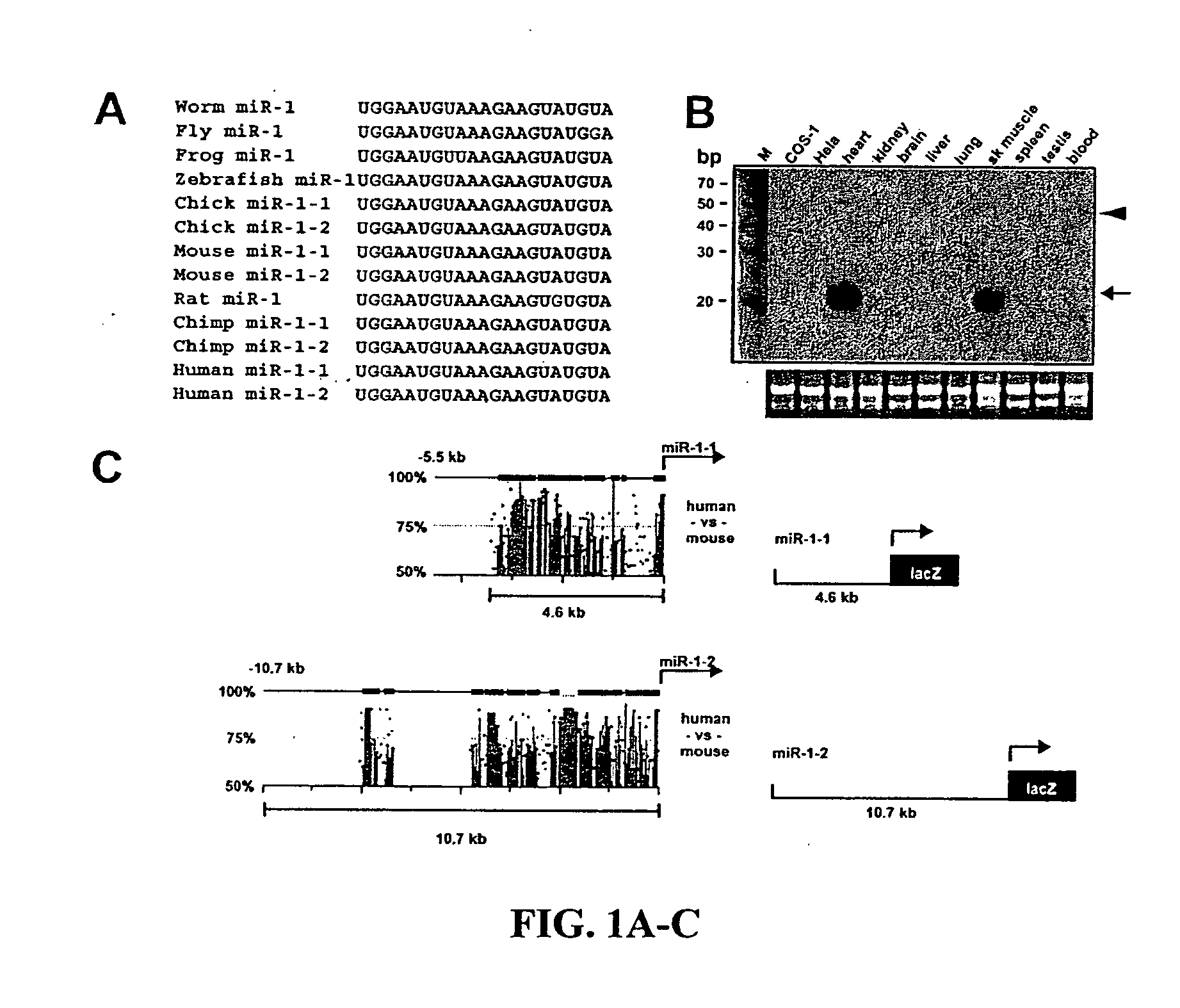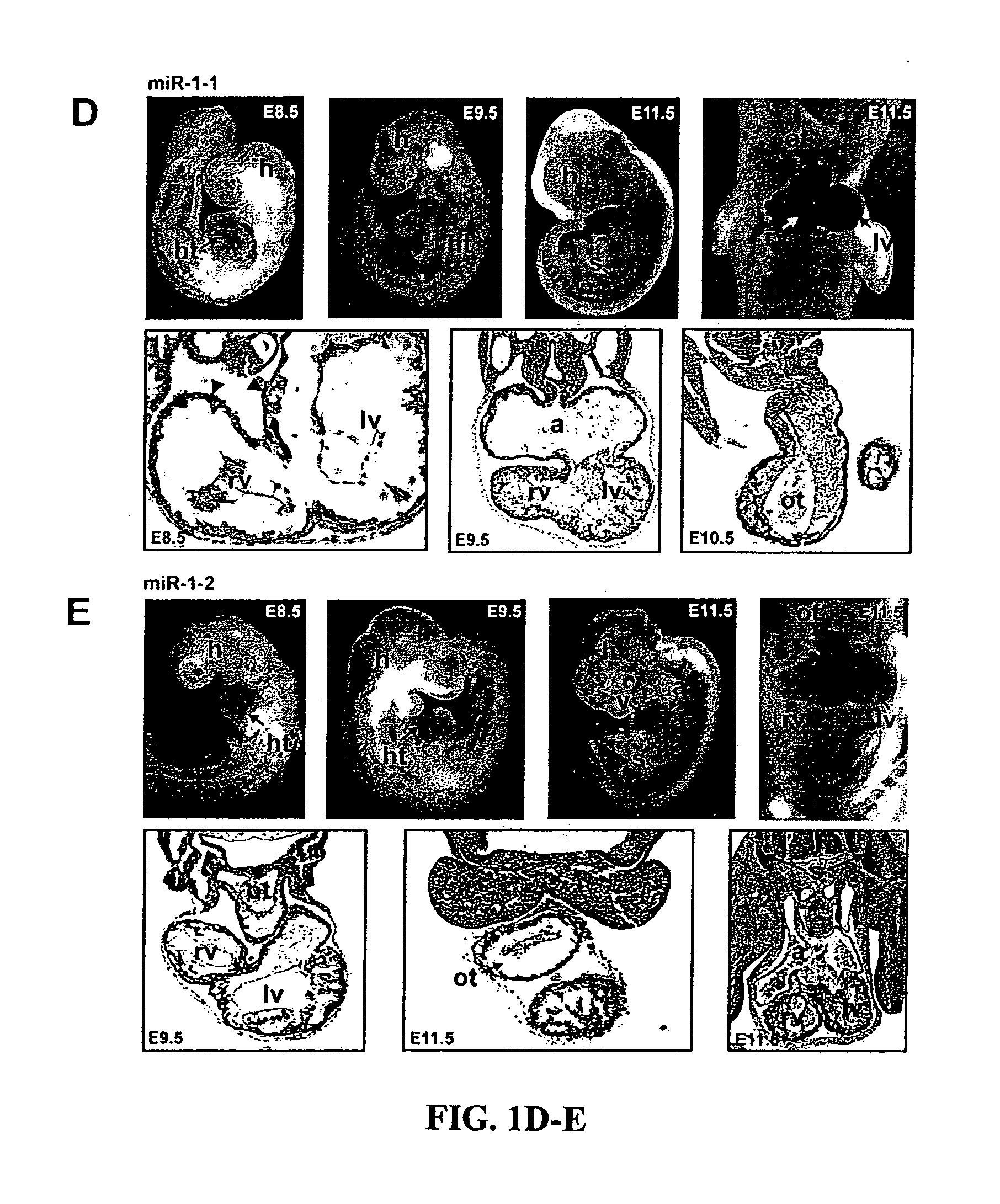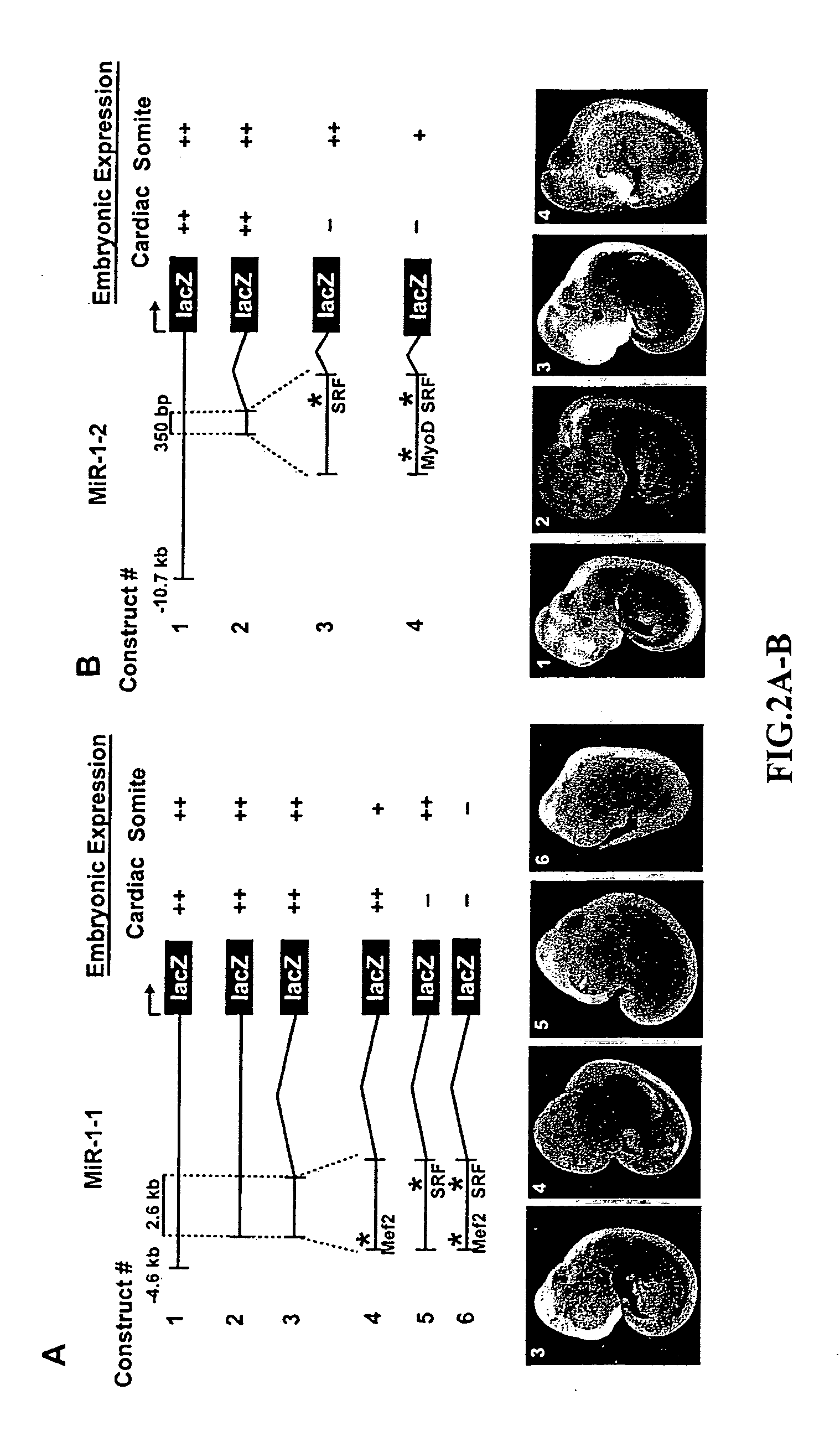Micro-RNA's that regulate muscle cells
a micro-rna and muscle cell technology, applied in the field of micro-rnas, can solve the problems of limited understanding of the specific roles and regulatory pathways controlled by mammalian mirnas, and organ hypoplasia
- Summary
- Abstract
- Description
- Claims
- Application Information
AI Technical Summary
Benefits of technology
Problems solved by technology
Method used
Image
Examples
example 1
Materials and Methods
[0129] Bioinformatics. Multiple sequence alignment was constructed by ClustaIX 1.83 with appropriate settings, and promoter analysis was performed with rVISTA. PatScan program was used for targets search, and energy and RNA folding were determined by mFold. Average ΔG in each species was determined by randomly selecting 60 3′ UTR fragments of 70 bp in length. The inventor determined the RNA secondary structure of each miRNA binding site plus 30 bp flanking sequence on each side. The inventor set the following values as a cut-off to define DSE and SE based on our observation. Average stem length was calculated for each species from at least 60 randomly selected sequences and cutoff for a SE stem was defined as: ≧8 bp (worm); ≧9 bp (flies); ≧10 bp (mice). Loops or unstructured single strands were defined as DSE with the following length cutoffs: hairpin loop, ≧11 bp; interior loop, ≧9 bp; bulge loop, ≧7 bp; multiple-branching loop, ≧11 bp; joint sequence and free...
example 2
Results
[0133] MiR-1-1 and miR-1-2 are expressed in developing cardiac and skeletal muscle. To determine whether miRNAs play a role in cardiac development or homeostasis, the inventor searched for miRNAs that were expressed in the cardiovascular system and were conserved across species ranging from flies to humans. Among these, miRNA1 (miR-1) appeared cardiacenriched based on our in silico data and previous reports (Lee and Ambros, 2001; Lagos-Quintana et al., 2001). The miR-1 subfamily consists of two closely related miRNAs, encoded by distinct genes, which share near complete identity and are designated miR-1-1 and miR-1-2. The inventor found that the putative miR-1-1 and miR-1-2 sequences, based on genomic sequence from different species, were highly conserved (FIG. 1A). Northern blot revealed that miR-1s were 21 base pairs in length and were expressed specifically in the heart and skeletal muscle of adult mice (FIG. 1B and FIG. 5).
[0134] Due to the similarity in miR-1-1 and miR...
PUM
| Property | Measurement | Unit |
|---|---|---|
| Length | aaaaa | aaaaa |
| Fluorescence | aaaaa | aaaaa |
| Inhibition | aaaaa | aaaaa |
Abstract
Description
Claims
Application Information
 Login to View More
Login to View More - R&D
- Intellectual Property
- Life Sciences
- Materials
- Tech Scout
- Unparalleled Data Quality
- Higher Quality Content
- 60% Fewer Hallucinations
Browse by: Latest US Patents, China's latest patents, Technical Efficacy Thesaurus, Application Domain, Technology Topic, Popular Technical Reports.
© 2025 PatSnap. All rights reserved.Legal|Privacy policy|Modern Slavery Act Transparency Statement|Sitemap|About US| Contact US: help@patsnap.com



